Man with a Movie Camera (Russian: ??????? ? ????-?????????, translit. Chelovek s kino-apparatom) – sometimes called A Man with a Movie Camera, The Man with the Movie Camera, The Man with a Camera, The Man with the Kinocamera, or Living Russia) – is an experimental 1929 Soviet silent documentary film, directed by Dziga Vertov and edited by his wife Elizaveta Svilova.
| Man with a Movie Camera | |
|---|---|
| Directed by | Dziga Vertov |
| Written by | Dziga Vertov |
| Cinematography | Mikhail Kaufman |
| Edited by | Elizaveta Svilova |
Production company | VUFKU |
Release date |
|
Running time | 68 minutes |
| Country | Soviet Union |
| Language | Silent film No intertitles |
Vertov's feature film, produced by the film studio VUFKU, presents urban life in the Soviet cities of Kiev, Kharkov, Moscow and Odessa. It has no actors. From dawn to dusk Soviet citizens are shown at work and at play, and interacting with the machinery of modern life. To the extent that it can be said to have "characters," they are the cameramen of the title, the film editor, and the modern Soviet Union they discover and present in the film.
Man with a Movie Camera is famous for the range of cinematic techniques Vertov invented, deployed or developed, such as multiple exposure, fast motion, slow motion, freeze frames, match cuts, jump cuts, split screens, Dutch angles, extreme close-ups, tracking shots, reversed footage, stop motion animations and self-reflexive visuals (at one point it features a split-screen tracking shot; the sides have opposite Dutch angles).
Man with a Movie Camera was largely dismissed upon its initial release; the work's quick-cut editing, self-reflexivity, and emphasis on form over content were all subjects of criticism. In the British Film Institute's 2012 Sight & Sound poll, however, film critics voted it the eighth greatest film ever made, and the work was later named the best documentary of all time in the same magazine.
Screenplay
The film has an unabashedly avant-garde style, and emphasizes that film can go anywhere. For instance, the film uses such scenes as superimposing a shot of a cameraman setting up his camera atop a second, mountainous camera, superimposing a cameraman inside a beer glass, filming a woman getting out of bed and getting dressed, even filming a woman giving birth, and the baby being taken away to be bathed.
Vertov's message about the prevalence and unobtrusiveness of filming was not yet true—cameras might have been able to go anywhere, but not without being noticed; they were too large to be hidden easily, and too noisy to remain hidden anyway. To get footage using a hidden camera, Vertov and his brother Mikhail Kaufman (the film's co-author) had to distract the subject with something else even louder than the camera filming them.
The film also features a few obvious stagings such as the scene of a woman getting out of bed and getting dressed and the shot of chess pieces being swept to the center of the board (a shot spliced in backwards so the pieces expand outward and stand in position). The film was criticized for both the stagings and the stark experimentation, possibly as a result of its director's frequent assailing of fiction film as a new "opiate of the masses."
Vertov — born David Abelevich Kaufman — was an early pioneer in documentary film-making during the late 1920s. He belonged to a movement of filmmakers known as the kinoks, or kino-oki (kino-eyes). Vertov, along with other kino artists declared it their mission to abolish all non-documentary styles of film-making. This radical approach to movie making led to a slight dismantling of film industry: the very field in which they were working. Most of Vertov's films were highly controversial, and the kinok movement was despised by many filmmakers of the time. Vertov's crowning achievement, Man with a Movie Camera, was his response to critics who rejected his previous film, A Sixth Part of the World. Critics had declared that Vertov's overuse of "intertitles" was inconsistent with the film-making style to which the 'kinoks' subscribed.
Working within that context, Vertov dealt with much fear in anticipation of the film's release. He requested a warning to be printed in the Soviet central Communist newspaper, Pravda, which spoke directly of the film's experimental, controversial nature. Vertov was worried that the film would be either destroyed or ignored by the public. Upon the official release of Man with a Movie Camera, Vertov issued a statement at the beginning of the film, which read:
"The film Man with a Movie Camera represents
AN EXPERIMENTATION IN THE CINEMATIC COMMUNICATION
Of visual phenomena
WITHOUT THE USE OF INTERTITLES
(a film without intertitles)
WITHOUT THE HELP OF A SCENARIO
(a film without a scenario)
WITHOUT THE HELP OF THEATRE
(a film without actors, without sets, etc.)This new experimentation work by Kino-Eye is directed towards the creation of an authentically international absolute language of cinema on the basis of its complete separation from the language of theatre and literature."
This manifesto echoes an earlier one that Vertov wrote in 1922, in which he disavowed popular films he felt were indebted to literature and theater.
Working within a Marxist ideology, Vertov strove to create a futuristic city that would serve as a commentary on existing ideals in the Soviet world. This artificial city’s purpose was to awaken the Soviet citizen through truth and to ultimately bring about understanding and action. The kino’s aesthetic shined through in his portrayal of electrification, industrialization, and the achievements of workers through hard labour. This could also be viewed as early modernism in film.
Some have mistakenly stated that many visual ideas, such as the quick editing, the close-ups of machinery, the store window displays, even the shots of a typewriter keyboard are borrowed from Walter Ruttmann's Berlin: Symphony of a Great City (1927), which predates Man with a Movie Camera by two years, but as Vertov wrote to the German press in 1929, these techniques and images had been developed and employed by him in his Kino-Pravda newsreels and documentaries for the last ten years, all of which predate Berlin. Vertov's pioneering cinematic concepts actually inspired other abstract films by Ruttmann and others, including writer, translator, filmmaker and critic Liu Na'ou (1905–1940) whose The Man Who Has a Camera (1933), pays explicit homage to Vertov's The Man With a Movie Camera.
On a technical note, Man with a Movie Camera's usage of double exposure and seemingly 'hidden' cameras made the movie come across as a very surreal montage rather than a linear motion picture. Many of the scenes in the film contain people, which change
Watch movie Man With A Movie Camera online on Amazon
Watch movie Man With A Movie Camera online
Watch The Movie On PrimeMarigold: An Adventure in India Full HD Movie Download

Meri Awaaz Suno Full HD Movie Download
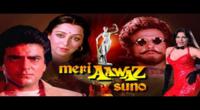
Anjaane - The Unknown Full HD Movie Download

Mohabbat (1997) Full HD Movie Download
.jpg)
Baarish (1957) Full HD Movie Download
.jpg)
Jagriti (1954) Full HD Movie Download
.jpg)
Qaidi (1984) Full HD Movie Download
.jpg)
Nanu Nanna Kanasu Full HD Movie Download

Hot Malaika Full HD Movie Download

Siri Siri Muvva Full HD Movie Download
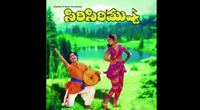
Raaga Deepam Full HD Movie Download
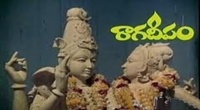
300 Full HD Movie Download

Geetham Full HD Movie Download
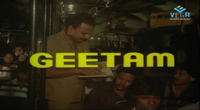
Blow Full HD Movie Download
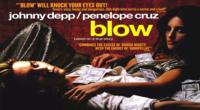
Final Destination Full HD Movie Download

Vanitha Police Full HD Movie Download

Chinna Kannamma Full HD Movie Download
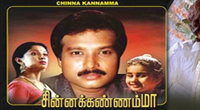
Sanchalanam Full HD Movie Download

Rocket Singh: Salesman of the Year Full HD Movie Download
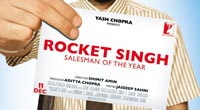
Ek Tha Tiger Full HD Movie Download
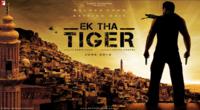
Veer Zaara Full HD Movie Download

Download latest Movie from bollywood
- 1> baaghi 3
- 2> THE SKY IS PINK MOVIE FULL STORY AND REVIEW
- 3> Luka Chuppi
- 4> TO ALL THE BOYS I’VE LOVED BEFORE
- 5> Kabir Singh
- 6> Street Dancer 3D
- 7> Simmba
- 8> Gone Girl
- 9> The Girl Who Lived
- 10> Ludo
- 11> DILWALE DULHANIA LE JAYENGE
- 12> GUILTY
- 13> The Godfather
- 14> Adventures of Rusty
- 15> Sooryavanshi
- 16> Satyameva Jayate 2
- 17> Thappad
- 18> Bhool Bhulaiyaa 2
- 19> KGFChapter 2
- 20> Mardaani 2
- 21> Pinjar
- 22> Shivaji maharaj
- 23> Ek Villian 2
- 24> Hungama 2
- 25> Divergent
- 26> Mumbai Saga
- 27> The Internship
- 28> HIT (telugu)
- 29> Panga
- 30> The perfect date
- 31> 16 December
- 32> Gopala Gopala (Telugu)
- 33> Brahmastra
- 34> Gangubai Kathiawadi
- 35> Manmadhudu
- 36> Nenu local
- 37> Mahanati
- 38> Shatamanam bavathi
- 39> Lagaan
- 40> After
- 41> MOM
- 42> Shamshera
- 43> Raguvaran BTech
- 44> Khakee
- 45> The villain
- 46> OM
- 47> Mr. perfect
- 48> Bueatifull mind
- 49> Hichki
- 50> Gabbar Singh
- 51> Jogi
- 52> Before Sunrise
- 53> Before Sunset
- 54> Before Midnight
- 55> The Big Bull
- 56> Top Gun: Maverick
- 57> The Purge
- 58> The Sky is Pink
- 59> Laxmmi Bomb
- 60> Sadak 2
- 61> Sufna
- 62> Prithviraj
- 63> PK
- 64> Coolie No 1(2020)
- 65> Black Widow
- 66> Dear Zindagi
- 67> Dil Bechara
- 68> PHIR HERA PHERI
- 69> WAR
- 70> Dostana
- 71> RRR: Roudram Ranam Rudhiram
- 72> Maidan
- 73> Dabbang 3
- 74> Chhalaang
- 75> life as we know it
- 76> SherShaah
- 77> Sandeep Aur Pinky Faraar
- 78> Event Horizon
- 79> 83
- 80> Radhe: Your Most Wanted Bhai
- 81> Gunjan Saxena: The Kargil Girl
- 82> Mr India
- 83> Vivah
- 84> Anokha Bandhan
- 85> Ghost
- 86> Bhoot: Part One - The Haunted Ship
- 87> Haseen Dilruba
- 88> Laal Singh Chaddha
- 89> Qismat
- 90> Rajput
- 91> Drive
- 92> Dil Chahta Hai
- 93> Dil Ki Baazi
- 94> Dil Ka Rishta
- 95> Teesri Manzil
- 96> Dil
- 97> Love Aaj Kal
- 98> Khaali Peeli
- 99> Bunty Aur Babli 2
- 100> Atrangi Re
- 101> Gulabo Sitabo
- 102> Jodi
- 103> Suraj Pe Mangal Bhari
- 104> Deewana
- 105> Attack
- 106> Sardar Udham Singh
- 107> Toofan
- 108> THE LOVEBIRDS
- 109> Jersey
- 110> Ginny Weds Sunny
- 111> Thalaivi
- 112> Shiddat
- 113> Angels vs Zombies
- 114> Koi Mil Gya
- 115> Thank God
- 116> Bhuj: The Pride of India
- 117> Hum Aapke Hain Kaun
- 118> The Platform
- 119> Bird Box
- 120> Roohi Afzana
- 121> Torbaaz
- 122> Nikamma
- 123> World War Z
- 124> Extraction
- 125> Train to Busan
- 126> Life of Pi
- 127> SHAADI MEIN JROOR AANA
- 128> Himmat Aur Mehnat
- 129> To All The Boys: P.S. I Still Love You
- 130> Mimi
- 131> Good Newwz
- 132> Shubh Mangal Zyada Saavdhan
- 133> Raabta
- 134> Harry Potter and the Philosopher's Stone
- 135> Harry Potter and the Chamber of Secrets
- 136> Chhapaak
- 137> War of the Worlds
- 138> Harry Potter and the Prisoner of Azkaban
- 139> Harry Potter and the Goblet of Fire
- 140> MURDER MYSTERY
- 141> Shakuntala Devi
- 142> Bachchan Pandey
- 143> Jayeshbhai Jordar
- 144> Sheer Qorma
- 145> Saina
- 146> 'O' Pushpa I hate tears
- 147> Kedarnath
- 148> MS Dhoni The Untold Story
- 149> Chhichhore
- 150> Badhaai Ho
- 151> Unstoppable
- 152> Oz the Great And Powerful
- 153> The Girl on the Train
- 154> Haathi Mere Saathi 2020
- 155> The Conjuring: The Devil Made Me Do It
- 156> Gandhi Se Pehle Gandhi
- 157> The Song of Scorpions
- 158> Srimanthudu
- 159> Hello Guru Prema Kosame
- 160> Beauty and The Beast
- 161> Black Panther
- 162> Charlie and the Chocolate Factory
- 163> Bole Chudiyan
- 164> Fidaa
- 165> Duvvada Jagannadham
- 166> Bruce Lee: The Fighter
- 167> Hyper
- 168> Yaara
- 169> Red (2020)
- 170> Shivam
- 171> That Is Mahalakshmi
- 172> Nishabdham
- 173> Aashram 2020 web series
- 174> Laxmii
- 175> Mismatched
- 176> STUDENT OF THE YEAR 2
- 177> NAIL POLISH
- 178> Ramprasad Ki Tehrvi
- 179> KAAGAZ
- 180> 12 o Clock
- 181> The Power
- 182> bolo hau
- 183> Tribhanga
- 184> JAMUN
- 185> Madam Chief Minister
- 186> Maasaab
- 187> Aadhaar
- 188> Tanhaji
- 189> Bhaagi 3
- 190> Bhootnath
- 191> MALANG
- 192> Jai Mummy Di
- 193> Haathi Mere Saathi 2021
- 194> Shakeela
- 195> Unpaused
- 196> Annayya
- 197> Vamsoddharakudu
- 198> Mrugaraju
- 199> Narasimha Naidu
- 200> Sankranti
- 201> Manasu Maata Vinadhu
- 202> Anjaane
- 203> Apaharan
- 204> Bachke Rehna Re Baba
- 205> Bewafaa
- 206> Roohi
- 207> Radhe
- 208> Zindagi Khoobsoorat Hai
- 209> Yeh Mohabbat Hai
- 210> Yeh Kya Ho Raha Hai?
- 211> The Tomorrow War
- 212> DehradunDiary
- 213> Meri Shaadi Karaoo
- 214> Matruu Ki Bijlee Ka Mandola
- 215> No One Killed Jesica
- 216> Aag Ka Goola
- 217> Eight Million Dollars
- 218> Three Hundred
- 219> Cats and Dog
- 220> Decoy
- 221> Gold Rush
- 222> You Have Got Mail
- 223> Final Destination three
- 224> Tofan
- 225> Jungle
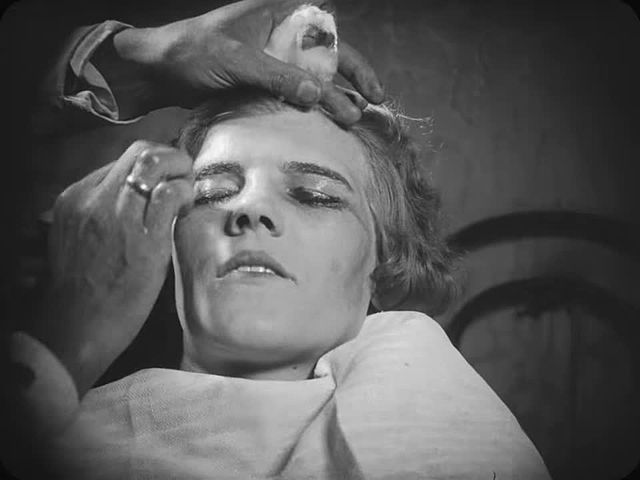 Story of movie Man With A Movie Camera :
Story of movie Man With A Movie Camera : 